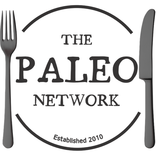The Paleo Guide to Cooking Oils
In the Paleo world, we’re not scared of fat. Quite the contrary – we embrace healthy fats and encourage liberal consumption. We worship the health giving properties of coconut oil, olive oil and grass fed ghee. At the same time, we understand the danger of rancid seed oils with a scarily high Omega 6 content. All the information about fats can be somewhat confusing – so do you know what oil to use, and when to use it?
Coconut Oil
My personal favourite – and perhaps the all-round king of cooking oils, coconut oil really is a product that no Paleo kitchen is complete without. It’s shelf stable, rich in healthy medium chain triglycerides and doesn’t oxidise easily. It’s perfect for using in baked goods, for frying, for roasting vegetables – or just eating by the spoonful. Many people also use it as a natural moisturiser, hair product or lip balm. It’s also been proven to have antibacterial effects and is excellent for improving your gut health, boosting your immunity and improving your metabolism. If you’d rather not stock up on lots of different oils, coconut oil has to be the first on your list.
Make sure you buy the unrefined ‘extra virgin’ kind – it’s solid at room temperature and liquid at around 24 degrees C (76F). It can be pretty expensive compared to things like olive oil, which is why I buy mine in bulk!

Ghee
Ghee always throws up a bit of confusion for us Paleo folk, not least because it’s a form of dairy and dairy isn’t part of the Paleo framework. Yes, Ghee is clarified butter – but the process that makes it removes the problematic casein and lactose content. If you don't tolerate other forms of dairy, you'll probably still be ok with ghee. I’ve recently started including it in my diet, with excellent results – and it tastes amazing too!
It has a great omega 3 : omega 6 ratio (roughly 1:1) and is rich in vitamins A, D, E and K2. It’s one of the most stable fats for cooking at high temperatures, so is great for frying and roasting. However, it is expensive, and if you can’t buy it grass fed, you’re probably better off without it altogether.
Palm Oil
Similar to coconut oil in that it is shelf stable and rich in healthy saturated fats, palm oil is generally more expensive and harder to find. It also draws about controversy because of its sustainability and the impact palm oil farming is having on Orang-utan populations. If you can find it from a verified, sustainable source, and you can afford it – then use it much as you would in coconut oil (except in baking). If you can’t, stick to the good stuff above.
Olive Oil
Probably the most popular and well known healthy oil – olive oil is one of those that you can enjoy with your conventional wisdom friends without getting into an argument about the health benefits of saturated fats. It stands up fairly well to heat, so makes a decent oil for light pan frying – but it’s much better as a dressing, drizzled liberally onto salads, meats, or used in pesto. You’ll find lots of different flavours and colours of olive oil on the shelves; just make sure you always buy ‘Extra Virgin’ and ideally organic. In my experience, the darker the colour, the tastier it will be.
Animal Fats
Animal fats are much maligned in conventional wisdom, but why so?
Avocado Oil, Walnut Oil and Macadamia Oil
Experiment with these as dressings and enjoy their unique flavours – but don’t attempt to cook with them. They’re not the most heat stable, and besides, they’re expensive so why would you want to? Buy them in dark bottles where possible to minimise oxidation.
So tell me, what’s your favourite cooking oil? If you can’t see it listed here, it’s probably not Paleo. So that means stay away from the Canola oil, Sunflower Oil, Vegetable Oil and Margarine!


